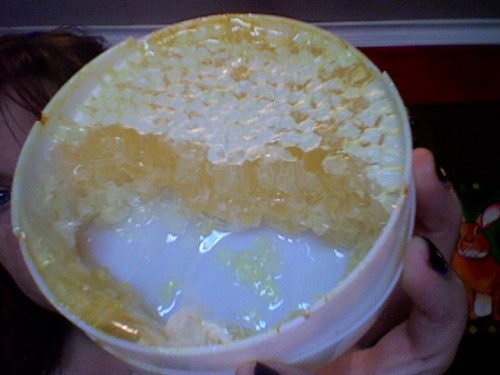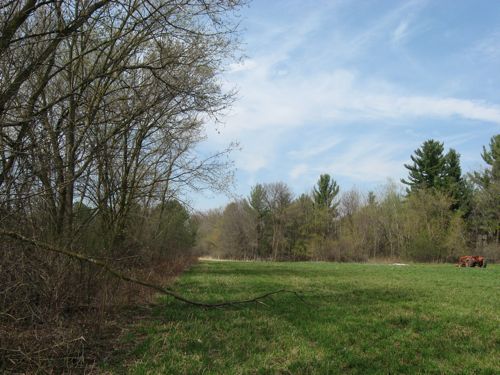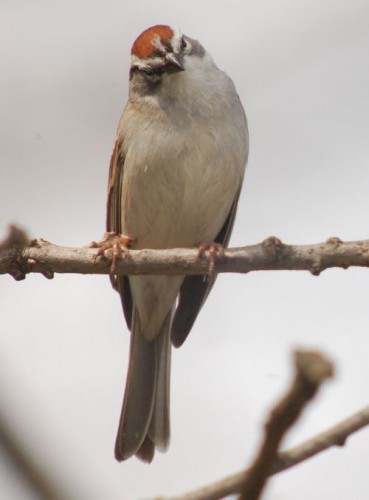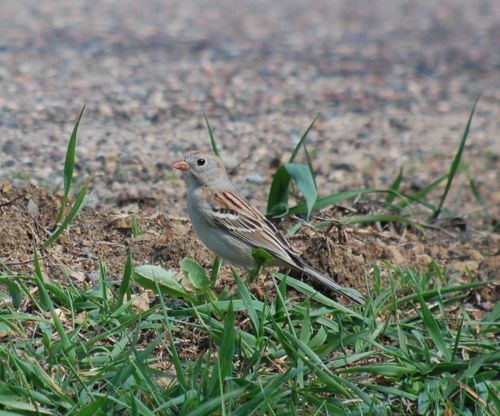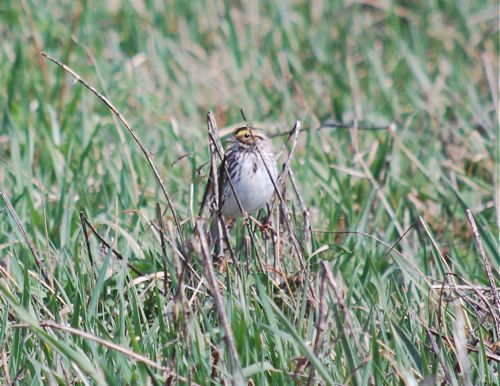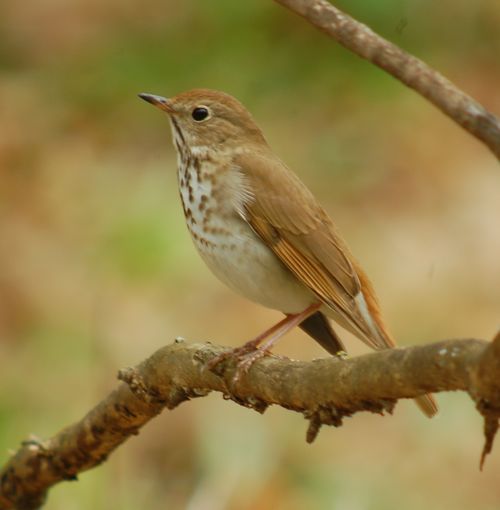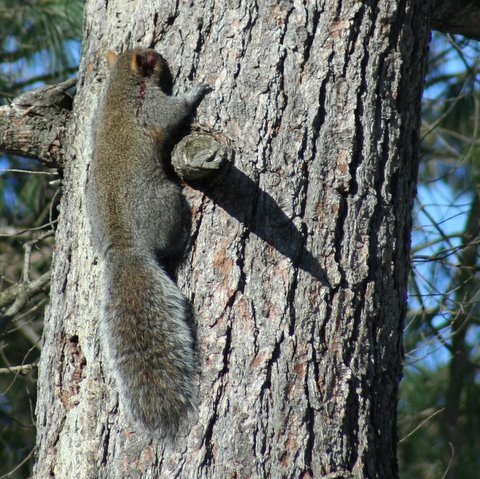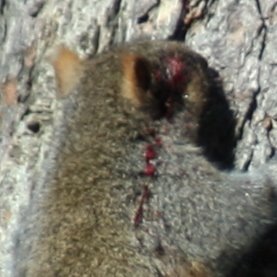Ah, where did the summer go? I ask that on October 10 when we have had our first snow of the season--that's a little insane, even for the Twin Cities. I'm prepared for snow by Halloween, this is too early. We have barely taken the full measures to get our hives ready for winter and already the snow has hit. We only got a dusting and most of it melted but is was a brutal reminder nonetheless.
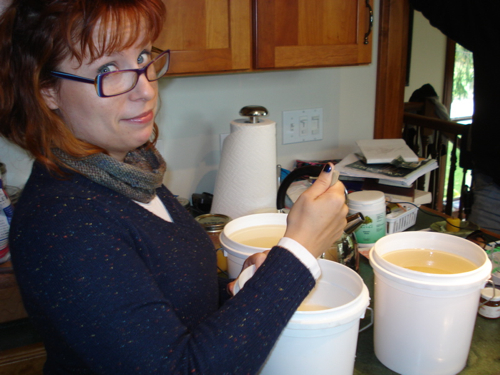
Kitty was in town and snapped most of the photos in this entry. Above, I'm making fall nectar to help our bees get a little extra food stores in place before winter hits hard. This concoction is even too much for hummingbirds. Basically, I fill one of those pails with table sugar to the top and then add enough water to dissolve it. It's a heavy duty nectar recipe to fortify the hives for winter. I mostly posted this photo to drive my mother crazy. She's not a fan of my recently acquired red hair, she feels that blond suits me better.

The pails go on the tops of the hive, above the ceiling so the workers can have easy access to the food. As you can see from the above photo, the nectar is a hit with the girls. They fly right to the pail even as we place it on the top of the hives. So much is uncertain with the hives in the winter. You can have a seemingly healthy hive in the fall and then something unknown can go wrong over winter like too much moisture or the hive cluster travels too far from the stores starving to death because its too cold and slow to move to food elsewhere in the hive. We hope all will go well and all will survive, but there's a good possibility we could lose some, if not all of them.
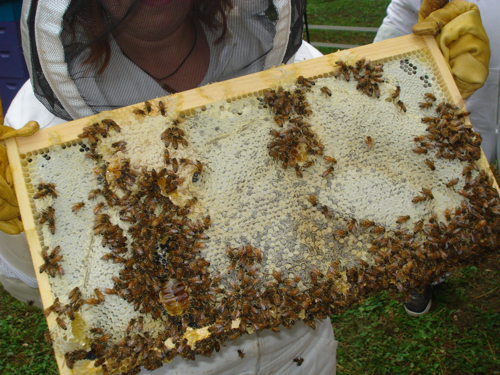
All of the hives look like they have good stores. Above, Kitty got a shot of a frame full of honey stores. We like to see lots of this in the fall. There was some concern that our red hive was failing, she was much quieter than our other hives and bee wolves were going into the hive. It was by no means a dead hive, there were many workers, but I would say half the work force of our other hives. This one had swarmed, had made a new queen and was producing larvae. But half the hive was elsewhere in the woods starting a new colony. Each brood box has a few empty frames in each box. We rearranged the frames so that the the bottom two boxes were chock full and the top box had the empty frames. Hopefully with the nectar pail up there, they will finish filling the top box and be good to go for the winter.
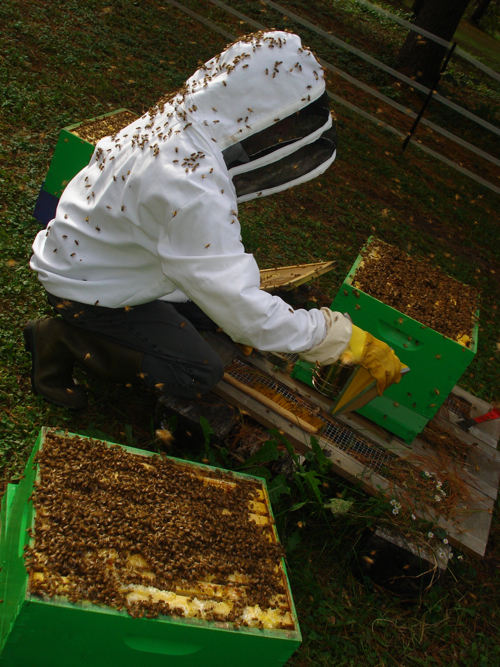
Some of the hives had some moisture in the top--deadly to a hive in winter. We took those hives completely apart and put a ventilation base at the bottom to see if that would help. From the massive amount of bees around and on Mr. Neil, you can see that they really were not too thrilled about the situation. Here's a video to give you an idea of the mood of the hive, we had just bumped the bottom box and the hive had gone from mildly irritated to PISSED. You can hear me announcing how angry the hive was (I sound like Robbie the Robot, "Danger, Will Robinson, Danger!" You can also hear bees bonking the camera warning they are about to sting. Mr. Neil remains in a zen like trans:
[youtube]http://www.youtube.com/watch?v=PB2yMOnPpZo[/youtube]
Mr. Neil opted to without the full bee suit, going for the half bee suit, regular trousers with wellingtons. This worked surprisingly well around the angry bees...even when I accidentally dropped a frame so full of bees that we could barely see the capped honey underneath right on his boot. Half the bees fell to the ground, the other half landed somewhere on his person...mostly in the trouser region. I froze like Ralphie in a Christmas Story when he looses the nuts for the spare tire, "Oh Fuuuuuuuuuuuuuuuuuuuuuuuudge," I said in my hand. Everyone else assessed the situation and the amount of bees gathering in a rather unfortunate area on Mr. Neil's pants.
Mr. Neil quietly requested assistance, Hans (our muscle in the beekeeping operation) looked away. Kitty just stared in wonder at all the bees around her. I looked at Lorraine and said, "You're the personal assistant, you can brush the bees away from his pants."
He came out unscathed and all I can say is thank goodness for smokers and bee brushes.
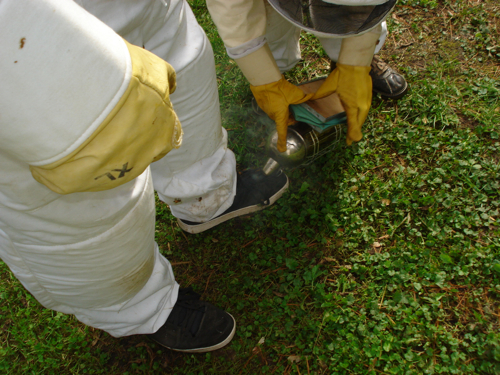
Hans had a breech of security in his bee suit. I felt bad, especially since before we walked to the hives, we were tossing around Letterman jokes and I threatened to create a hostile work environment for him. Little did I know I would do that, but not in a wacky sexual way, more with a few thousand angry worker bees kind of way. A worker found her way to the tender region between the bottom hem of his bee suit and the top of his shoe. I tried to puff some smoke on the area to prevent the stinging bee's pheromone from alerting others to sting the same area. Alas, it was in vain, more bees rushed to Hans's shoe and I think he got stung about five or six times. Two bees got caught in his shoe laces and I think they attracted more angry workers. Way more hostile than I intend. I also got stung in the same area and learned that it's true, the more I get stung, the less it hurts. It's still not pleasant, but it's not the pulsating ouch fest like the first sting.

I love this shot of Kitty. She's covered in bees, getting the full experience but you can also see a couple of angry bees going right in to bonk her on the front screen of her bee suit. She got some lovely photos. Besides rearranging the hives, we took the last remaining honey supers back for extraction. A few stragglers hid among the frames and followed us into the house.
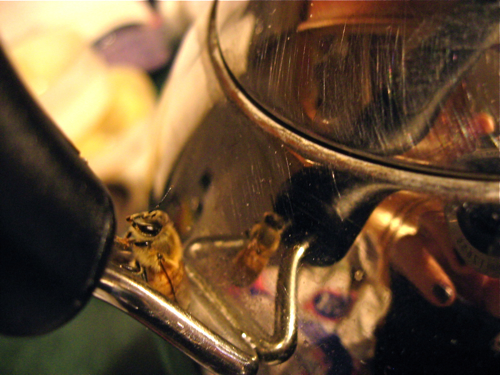
One hid surreptitiously on the tea kettle. What a clever girl! The Englishman likes his tea and many people would prepare hot water throughout the day. They would grab the handle to pour and then she would be ready to make her move and strike upon the unsuspecting fingers.
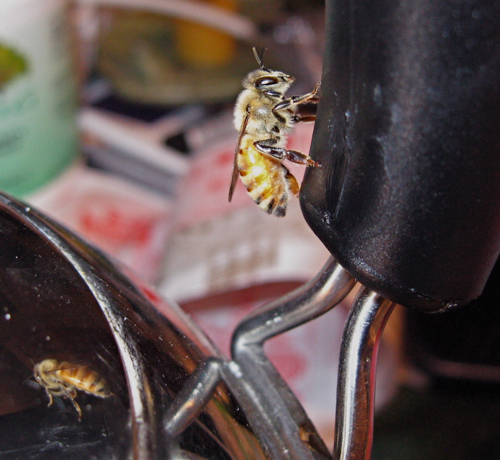
However, she was discovered and many photos were taken of her. After a few rounds of the flashes of the camera she flew off to unknown regions of the house. We hoped that like the rest of her friends that she found a way outside. At the end of the day, I gathered all of my stuff to head home.
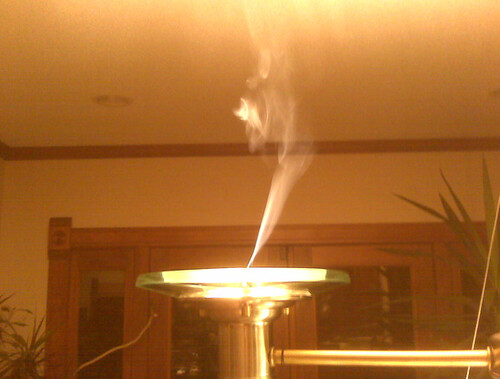
I turned to say goodbye and noticed a steady stream of smoke coming from the light above the kitchen table. "Um, Kitty? Should that light be smoking?"
We stood on chairs to assess the situation. I was still too short to see the cause, but Kitty looked inside and said that it was a honey bee. It was at that point you could get a faint whiff of something smoky sweet. Poor, tea kettle bee! Her plans thwarted, she took the noble end of a fiery death in dining room light fixture.
I can't end this on a Viking Bee Funeral. So, I end this post with a video of Neil demonstrating his mad bee flicking technique. He was taking frames from our honey supers and flicking all the bees off to go back into their hives. He's quite good at it:
[youtube]http://www.youtube.com/watch?v=aJI5wqHiEnQ[/youtube]
There you have it. Neil Gaiman, talented bee flicker.
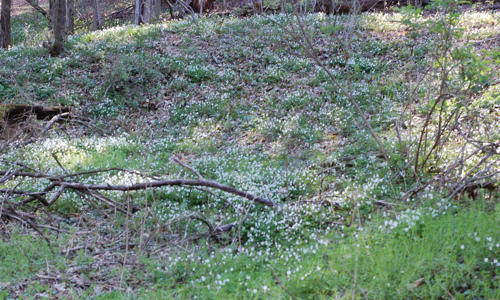 This spring has been spectacular for wildflowers and the woods around the beehives are covered in them. We've planted some natives and a two years ago, I bought some clearance large-flowered trillium to add in. I was inspired to encourage more near Mr. Neil's house because you can find a few small patches of trillium (both nodding and large-flowered) in the surrounding woods and about ten miles away is a HUGE hill that is covered with them in the spring--I've never seen such a large patch in my life. The person who owns the land also has a maple syrup farm so I think that patch is quite safe from development. I was sad last summer that not one of the four clearance trillium I planted grew but yesterday I a nice surprise:
This spring has been spectacular for wildflowers and the woods around the beehives are covered in them. We've planted some natives and a two years ago, I bought some clearance large-flowered trillium to add in. I was inspired to encourage more near Mr. Neil's house because you can find a few small patches of trillium (both nodding and large-flowered) in the surrounding woods and about ten miles away is a HUGE hill that is covered with them in the spring--I've never seen such a large patch in my life. The person who owns the land also has a maple syrup farm so I think that patch is quite safe from development. I was sad last summer that not one of the four clearance trillium I planted grew but yesterday I a nice surprise: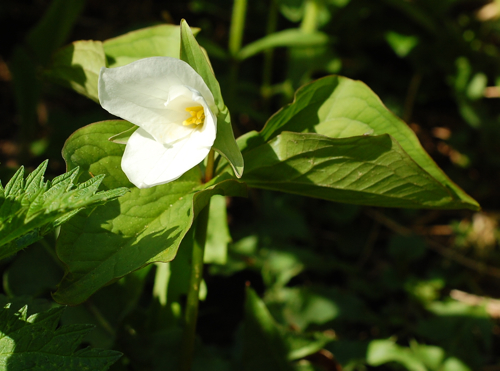
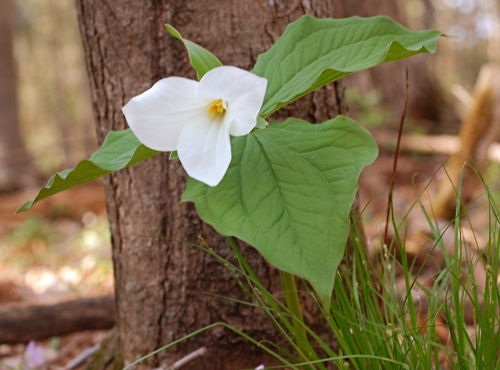
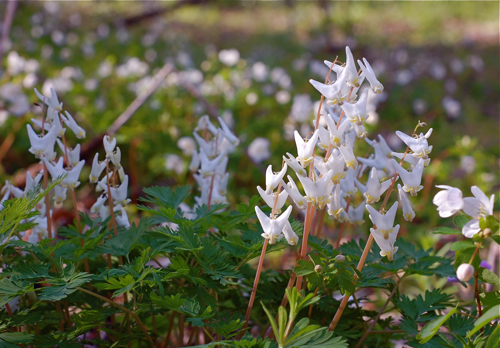

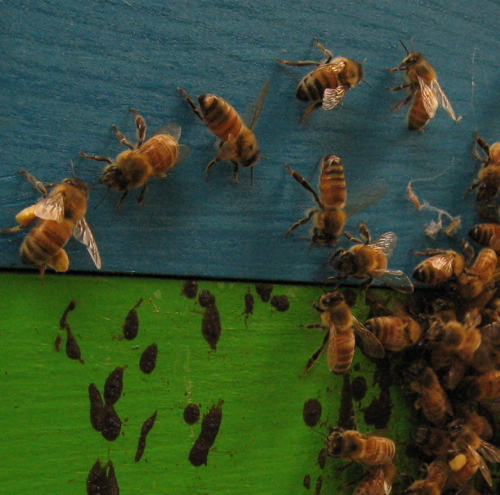 I know the reports for allergy sufferers has been rough this spring, but our bees our loving it. They are returning to the hives with massive pollen baskets. All four hives are still going strong this spring. I think this early spring allowed us to open them up early enough to get them ventilated and get a head start on the brood and set up for this summer's honey season.
I know the reports for allergy sufferers has been rough this spring, but our bees our loving it. They are returning to the hives with massive pollen baskets. All four hives are still going strong this spring. I think this early spring allowed us to open them up early enough to get them ventilated and get a head start on the brood and set up for this summer's honey season.
